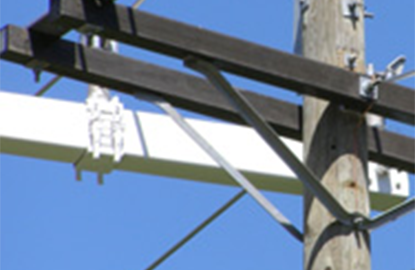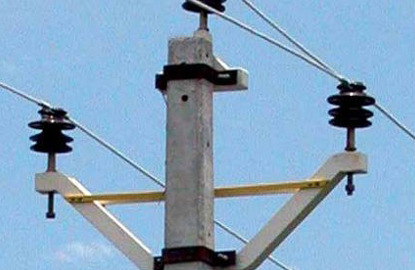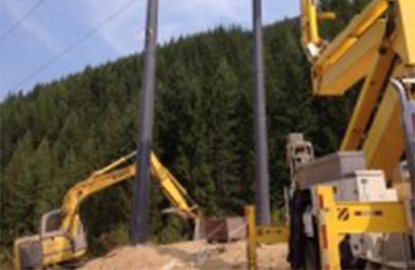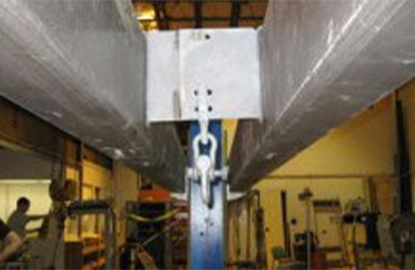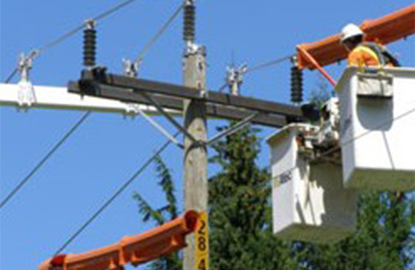In an industry with vast infrastructure that is meant to last a quarter-century or more, changes don’t happen overnight when a new technology comes along. At this point, you are probably aware of FRP as an alternative to traditional cross-arm materials like wood or steel. But, why should you start using FRP cross arms in your next transmission project? In this post, we will detail the benefits of FRP and why you should install FRP cross arms today
1. Asset Management
FRP cross arms can be manufactured in relatively short order, providing quality structures in the large quantities utilities need. The current lead time is as low as 3 weeks. This is in contrast to the over 6-month wait for industry-quality steel for electrical applications.
2. Cost Savings
The largest expense in replacing wood or steel cross arms is the cost of time to send the crew to the installation site. Installation can be particularly expensive if the only way to access the site is by helicopter, due to rough terrain. Installation costs are required to replace wooden cross arms every 25 to 40 years, depending on environmental conditions and the original quality of timber. Meanwhile, FRP cross arms provide the possibility to skip up to 2 of the replacement cycles required by wooden cross arms as they enjoy a life expectancy of over 75 years. In overall life cycle cost analysis, this represents significant savings. Although this is a very simplified life cycle cost calculation here, more detailed site, jurisdiction and utility-specific models could be developed easily.
3. Environmentally Safe
In a world where environmental concerns are becoming a key issue, the minimal environmental impact of FRPs is attractive. FRP cross arms are environmentally inert as there is no leaching of chemicals into the environment. Because of this, some environmental groups are embracing the use of FRP structures in environmentally sensitive areas like bogs and wetlands. In the case of disposal, nothing from the FRP cross arms will contaminate the environment, and as such FRP cross arms can be recycled (preferred option) or placed in a general landfill. Yet more can be done to mitigate their impact, and currently, there is bioremediation research in progress to develop biotechnological processes that will enable the disposed of Polyurethane to be rendered into reusable and environmentally safe products.
4. Durability
Vandalism is a concern for some transmission operations. FRP cross arms proved to be quite resistant to ballistic projectile damage (gunshots); during testing, many bullets simply bounced off. Even large bullets fired at very close range did not cause structural failure. FRP cross arms are also a very durable choice in warm, high humidity environments where treated wood does not last very long and steel corrodes very quickly. To compare wood, steel, Fibre Reinforced Polymer (FRP) composite, and other specialty composite material cross arms, extensive accelerated aging, the electrical, mechanical, and structural testing program was developed and carried out by independent research subsidiary of a large Canadian utility company. The test programs clearly show the benefits of FRP composite cross arms and also proved the viability of FRP cross arms in showing resistance to lightning strikes, bearing structural loads well, and long-term durability.
5. Raptor & environmental protection
In some areas, raptor protection is a particular concern. When these birds land on energized steel transmission cross arms, their long wingspan can bridge over the distance between the conductor phases and metal cross arms, causing injuries and potentially loss of wildlife. When this happens, utilities have to pay significant penalties; it is also a public relations challenge. With the electrically non-conductive nature of FRP cross arms, such accidents and issues are preventable.
6. Long term performance
Using new materials and components always raises questions about long-term performance. As mentioned above, accelerated aging tests performed by an independent laboratory confirmed that two-component polyurethane composite cross arms have an expected life span of over 75 years. This is significantly better than the expected life span of wood cross arms and galvanized steel (with no additional corrosion intervention once the galvanized coating is gone), which is about 35 years in most urban environments.
Taken together, FRP cross-arms represent an economic, environmentally friendly, and feasible alternative to traditional materials.
To learn more about FRP products, check out our products page or contact us for an expert consultation.
